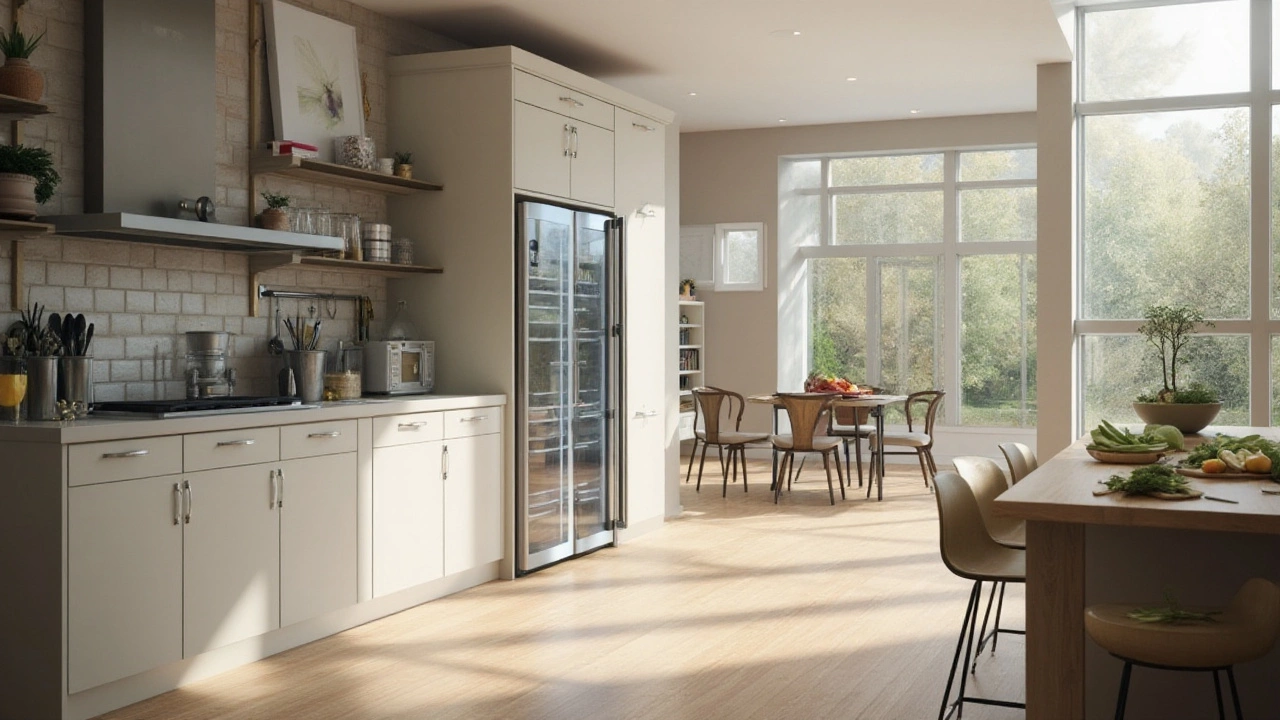Careful consideration of refrigerator placement is crucial in kitchen design for optimizing functionality and the overall flow of the space. Poorly placed refrigerators can hinder movement, block light, or interfere with cooking processes. Strategic placement not only improves the aesthetic appeal but also enhances ease of use. This article explores areas to avoid when installing your refrigerator to create a harmonious kitchen environment.
Kitchen Design Tips: Easy Ideas to Boost Style and Function
Ready to give your kitchen a fresh look without a full gut‑renovation? You don’t need a huge budget or a design degree. Small changes to layout, lighting, and finishes can make the room feel bigger, brighter, and more useful. Below are straightforward tips you can start using right now.
Plan Your Layout Wisely
First, look at the work triangle – the imagined line connecting the sink, stove, and fridge. Keep the three points within a comfortable distance so you don’t waste steps. If the triangle feels cramped, try moving appliances to a wall that already has open space. A single‑shelf island can add prep area without breaking the flow, especially in open‑plan homes.
Next, think about zones. Separate cooking, cleaning, and storage areas visually by using different countertop materials or a change in flooring pattern. Even a contrasting backsplash tile can signal a shift from prep to cooking space. This makes the kitchen feel organized and reduces the mental clutter of searching for tools.
Pick Materials That Last
When it comes to countertops, durability beats trend. Quartz offers a low‑maintenance surface that resists scratches and stains, and it comes in many colors that mimic natural stone. If you love the look of wood, choose a sealed butcher block that can be sanded down later if it gets worn.
Flooring should tolerate spills and traffic. Porcelain tile is water‑proof and easy to clean, while hardwood with a tough finish adds warmth. For a budget‑friendly option, consider luxury vinyl planks that look like wood but handle moisture better.
Cabinet fronts are a quick way to update style. Swap out old handles for modern brushed‑nickel pulls, or paint cabinets in a fresh matte hue. Light colors reflect more light, making a small kitchen feel larger, while a deep navy can add drama if you pair it with bright hardware.
Lighting makes or breaks a kitchen. Combine ambient ceiling lights with under‑cabinet LEDs to eliminate shadows on work surfaces. A pendant light over the island adds personality and directs focus to the heart of the room.
Finally, add personality with accessories that are both pretty and practical. Open shelves can showcase stylish dishware while keeping everyday plates within reach. A small herb garden on the windowsill supplies fresh flavor and a splash of green.
These kitchen design tips are easy to apply and give you noticeable results fast. Start with one change—maybe new handles or a different light layout—and watch the whole space feel refreshed. Your kitchen can be both beautiful and efficient without a massive overhaul.
